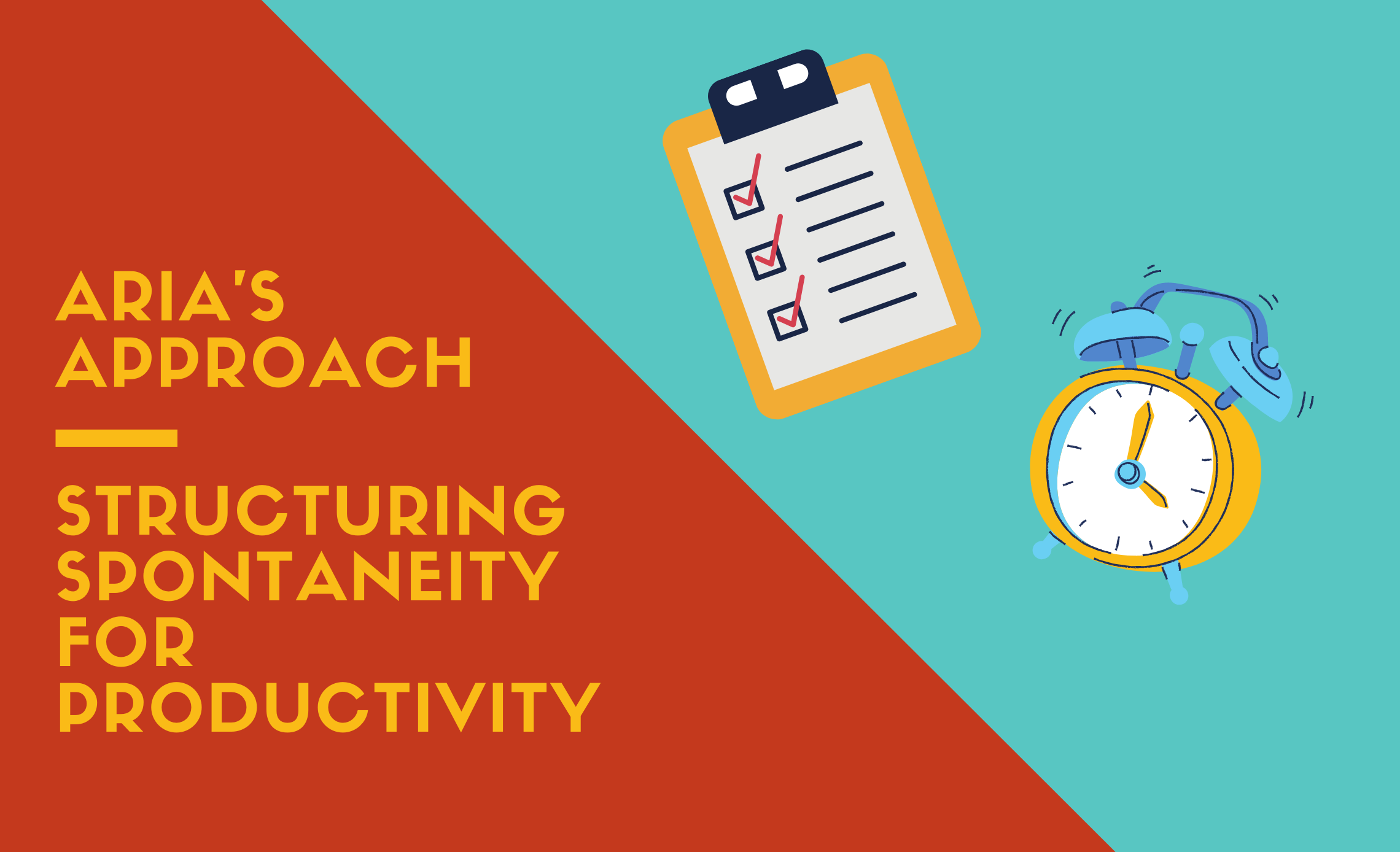By Opinion Editor Aria Lakhmani
Structuring Spontaneity for Productivity
“How can I be more productive?” There are thousands of articles, videos, and TED talks addressing this question, yet one thing I’ve noticed is that they all share the common sentiment of setting strict schedules or routines for yourself. As somebody who has always valued spontaneity, I’ve struggled to take this advice to heart. Recently, I’ve come to realize that schedules and spontaneity aren’t mutually exclusive – in fact, they are both incredibly important and can be achieved simultaneously.
Scheduling is undoubtedly a helpful way to manage time and ensure that you’re on track to finish work. It can prevent you from wasting hours and hours on a single task. However, successful scheduling is often portrayed as strict, with no wiggle room, from meticulous to do lists to half hour blocking with Google Calendar. While this approach may work for some, I’ve found that for myself and many of my friends, it makes scheduling too restrictive. When set routines start to seem like a ball and chain, the task at hand may also feel dull, and an accidental straying from the set blocks of time may lead to frustration too. Studies show we’re not alone in this feeling: scheduling can make activities seem more work-like and decrease excitement surrounding them.
My biggest gripe about scheduling time used to be about the lack of spontaneity it imposed. I’ve often found that some of my best ideas come when I’m either working on a different task or taking a break. I often move on from projects if I feel like I’m stuck in a rut until I get a “Eureka!” moment. The idea of restricting myself to only working on certain things during specific time slots seems counterintuitive to this.
However, if I always lived spontaneously, I’d be up until 4 a.m. every day waiting for inspiration to strike. So if scheduling is restrictive and spontaneity is not always productive, then how can we manage our time effectively? I’ve found my most productive work comes from striking a balance between the two. Scheduling doesn’t have to consist of strict boxes organized by only goal-oriented tasks. Rather, we can set aside structured spontaneity — time dedicated to think freely or embark on unplanned ventures. Implementing the 80/20 rule is a great way to start by setting aside 80% of time for planned work and 20% of time for more spontaneous work.
“How can I be more productive?” is still a question whose answer remains elusive, but by striking a balance between scheduling and spontaneity, we can move away from traditional definitions of strict schedules and towards systems that suit us better.
Cover image by Opinion Editor Aria Lakhmani


Be the first to comment on "December Column: Aria’s Approach"